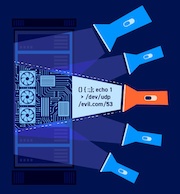DAST
Managing users and permissions
-
Last updated: December 16, 2025
-
Read time: 1 Minute
Burp Suite DAST uses role-based access control to manage permissions for your users. For more information, see Role-based access control.
You can add users to Burp Suite DAST locally, or using single sign-on (SSO).
Note
Even if you want to manage user authentication with your existing SSO solution, we recommend that you create a backup local admin user.
Managing users locally
You can add and manage your users individually through the Burp Suite DAST dashboard. You can do this for all your users, or you can combine it with your SSO solution. For more information, see Adding local users.
Using SSO
Burp Suite DAST supports authentication via the LDAP and SAML SSO standards. You can also create and remove users via SCIM. For more information, see Enabling SSO.
Warning
Be cautious when creating users and assigning permissions. Users may be able to access and exploit internal systems if your infrastructure isn't sufficiently secured. To mitigate this risk, it's crucial to limit the creation of new users and assign permissions carefully.


